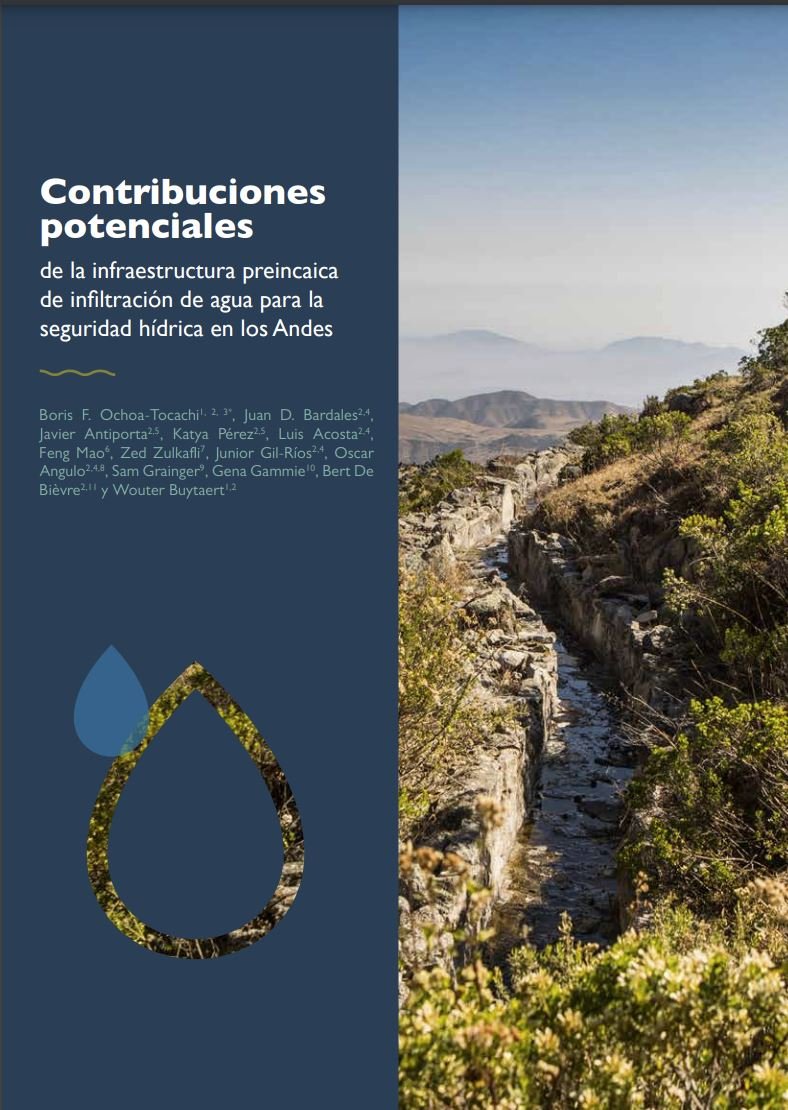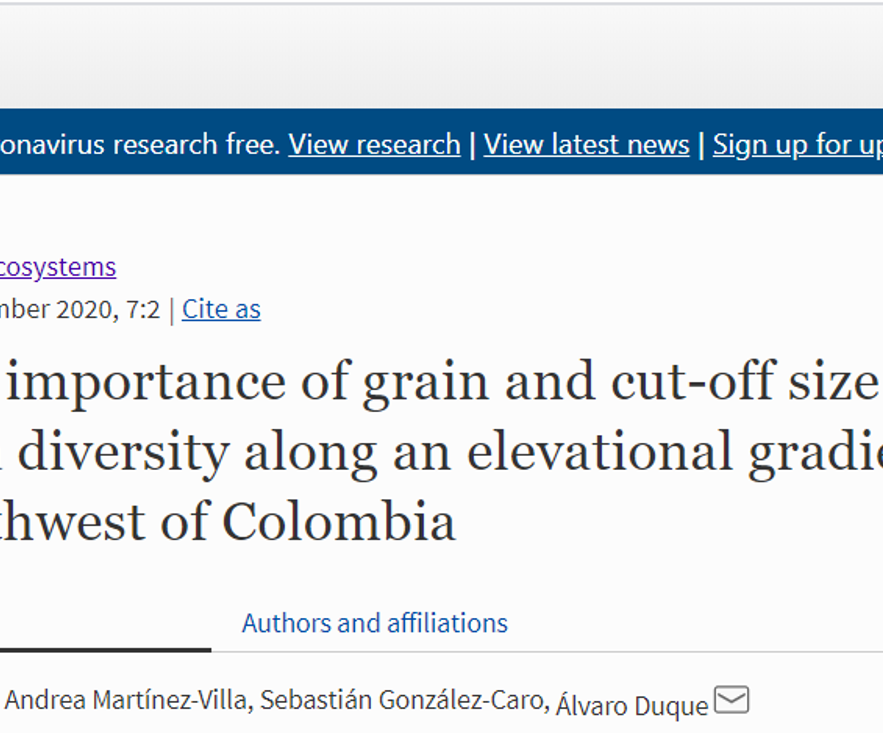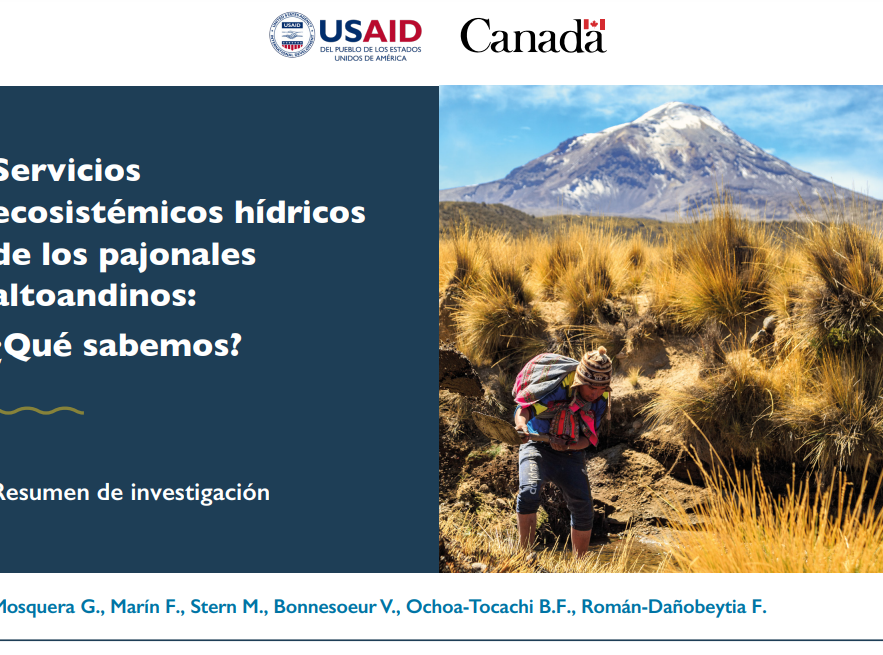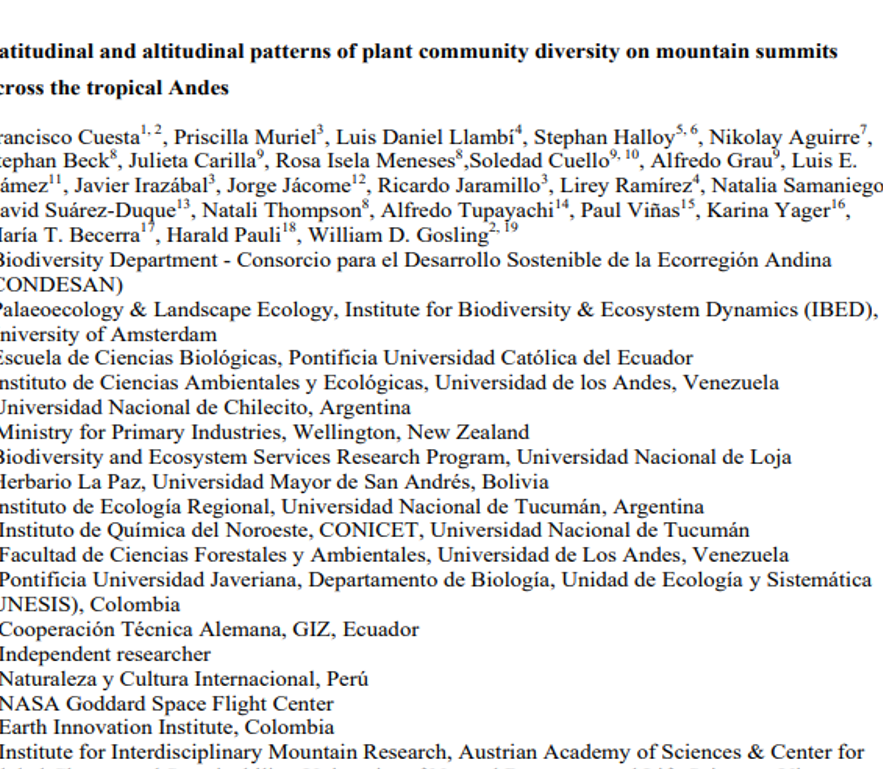Understanding how GCC is affecting the biological diversity of the Andes is of utmost importance and timeliness given the relevance of the region for biological conservation. Our research questions were (1) what is the spatial (country-level) and temporal distribution of the scientific research exploring links between GCC and biodiversity in the Andean region? (2) What are the methodological approximations, areas of research and subjects of study most commonly considered? And (3) What are the trends in biodiversity responses most commonly found under different GCC stressors? We found that the first paper on GCC and biodiversity in the Andes was published in 2001. Since then the annual rate of publications, as well as the variety of areas of research, has risen steeply. The 65 published articles we found are likely to represent 1% of thescientific literature dealing with tropical ecology. Of those, more than half of the studies were conducted in a single country, used mostly observation rather than modelling or experimental methodological approaches, and focused mainly on plants.
Studies dealing with birds, mammals and reptiles were notoriously underrepresented. The high number of GCC stressors and the great variety of responses found in this synthesis makes it difficult to draw general conclusions. However, we found that observational, modelling and experimental studies report negative GCC impacts on the biological diversity of the region. Most generally, observation and modelling studies report contractions of the distribution ranges of Andean species, and negative effects on species population densities and individual performance. We conclude our review suggesting that networking, recovering historic field data and conducting large-scale ecosystem experimental studies are critical to improve Sour knowledge on the effects of GCC on Andean biodiversity.
Artículo Científico, EcoAndes
Effects of climate change on Andean biodiversity: a synthesis of studies published until 2015
- Proyecto: EcoAndes
- Autor: Báez, Selene
- Autor secundario: Jaramillo, Liliana – Cuesta, Francisco – Donoso, David
- Instituciones relacionadas: CONDESAN, Universidad Técnica Particular de Loja, Universidad de Cuenca, Universidad Politécnica Nacional
- Año: 2016
- Países: Ecuador
- Área temática: Biodiversidad
- Líneas de trabajo: Investigación
(Descargas - 42)





